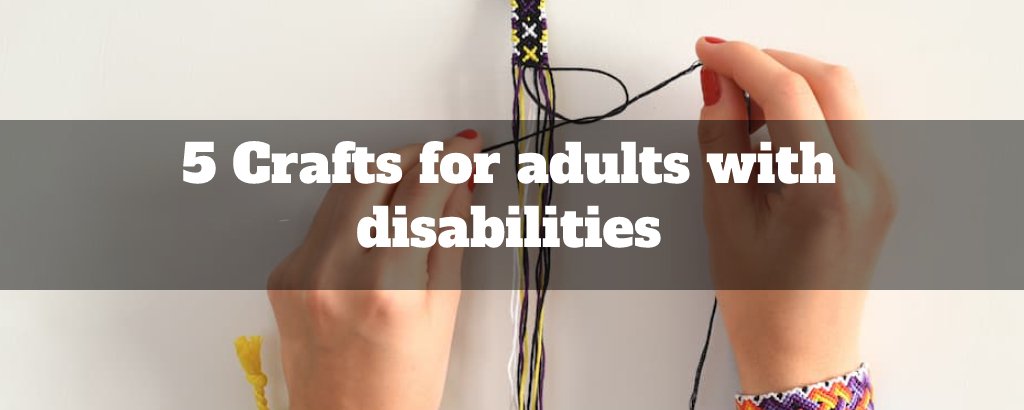Living with a disability is challenging, but improving one’s quality of life through a change of mindset is possible. All you need is a can-do attitude and mindset.
Providing individuals with physical disabilities with ideas for arts and crafts is a great way to keep their minds active and boost their confidence. Physically disabled people can also engage in activities that improve their motor skills.
Exposing people to art and creative treatments has various benefits. Most individuals, including those with a broad spectrum of Developmental Disabilities, consider arts and crafts among the most accessible forms of creative expression.
It can give this group of adults a constructive way to express their creativity, which may give them a feeling of accomplishment. Moreover, doing so in a group can enhance participants’ social connections and abilities. [1]
The following craft suggestions can help persons with multiple disabilities keep their attention on the learning process.
Painting
Painting is the most accessible art form for adults with disabilities. It’s possible to paint in various styles, including oil, faux, canvas, acrylic, watercolor, and more. With fabric paint, you can polish up old fabrics with a new coat of paint in various colors.
Besides a few pencils, you’ll also need a wide range of fabric colors. Various bags, fabrics, linens, and shirts can be decorated this way.
Pearl colors will give the artwork a modern feel. Paintings may reflect nature in its most pristine state or human emotions in their most exquisite form.
Wheelchair Painting
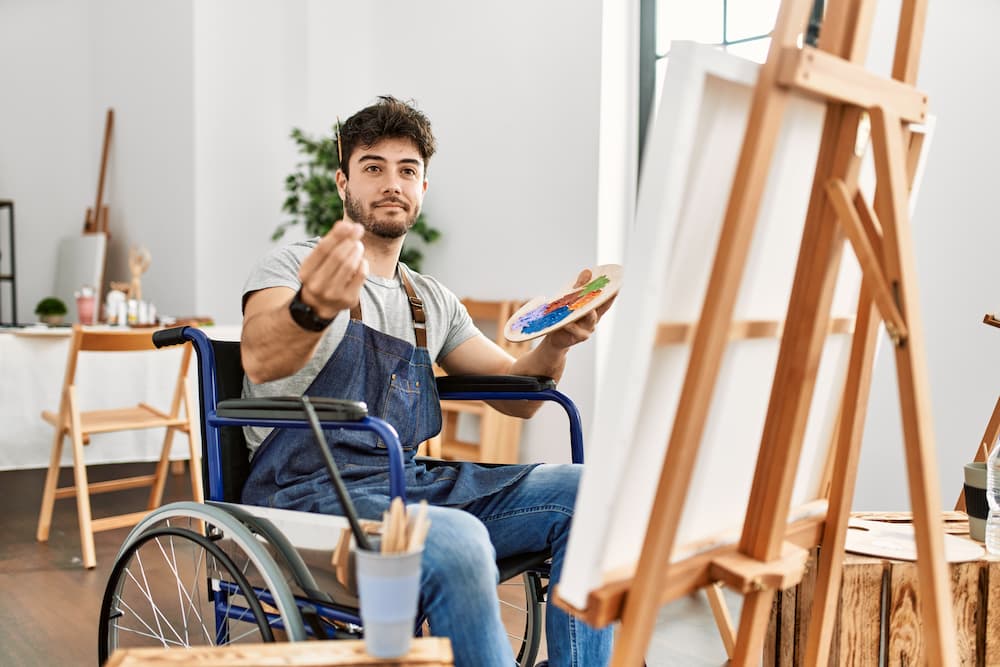
Painting using a wheelchair involves rolling across a canvas after first dipping the chair’s wheels in washable paint. You may paint the wheels with whatever color you choose with a paintbrush. Another method involves rolling paint onto the canvas and then driving through it with a paint roller with a longer handle.
Some people who use wheelchairs and have restricted hand mobility prefer this method over painting with their mouths.
Another option for painting without using your hands is to use a mouth brush. It’s possible to feel more relaxed when painting from a chair, despite the less-precise results. You can also paint outdoors in your garden or lawn to paint flowers.
Creating Lovely Greeting Cards
Making beautiful cards is one of the best arts and crafts for individuals with disabilities and their creative outlet. Coloring paper, crayons, pencils, sketch pens, etc., are all good options for creating handmade greeting cards.
There are various events for which greeting cards can be made, including birthdays, marriages, anniversaries, and more. It is a good idea for a craft for people who have trouble walking. All the individuals will appreciate and value your efforts.
Birthday Balloon Card
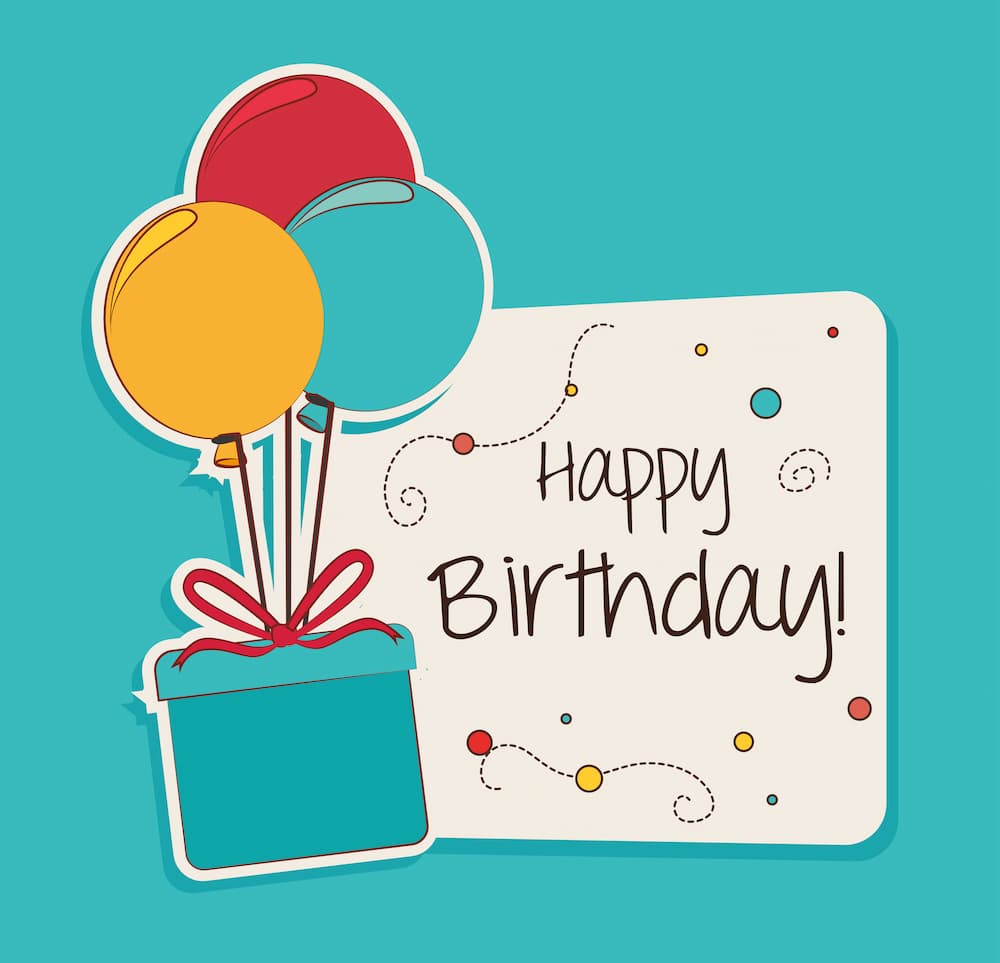
Create a simple homemade birthday card with only a few paper scraps. To begin, get a blank greeting card (or make your own from folded papers) and attach a balloon shape cut from colorful paper with craft glue or double-stick tape. Put this adorable card in an envelope after you’ve written a heartfelt note on the balloon.
Creation of Fictional Works
Writing stories and novels can be another great art and craft for disabled adults to do. These activities are entirely non-physical. The only requirement is a pen and some time to put pen to paper in the form of short stories.
Writing Fiction Story
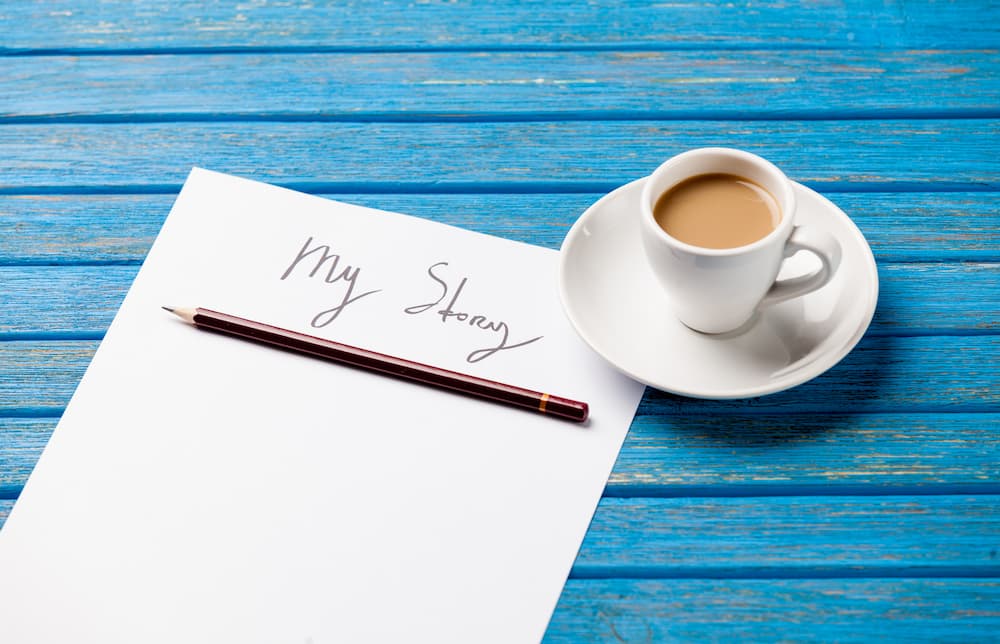
One of the most challenging aspects of writing fiction is developing a good story concept. Finding a topic to write about is difficult because of the tension between the want to create and the difficulty of knowing where to start.
Stories are taught to writers, but they need to learn how to generate a fascinating idea. Lucky for you, your brain is already full of great ideas for stories. It can be a fun project.
Making Jewelry and Beadwork
Beading is an excellent hobby for adults with mental or physical disabilities since it provides a soothing expression and a finished product that can be worn and shown off. Beading is an excellent hobby since it helps you develop fine motor skills and mechanical abilities.
Wood, metal, glass, and clay are all suitable materials for bead making. Beads are available in various sizes and prices and may be combined to make stunning jewelry and DIY projects.
DIY Braided Bracelet
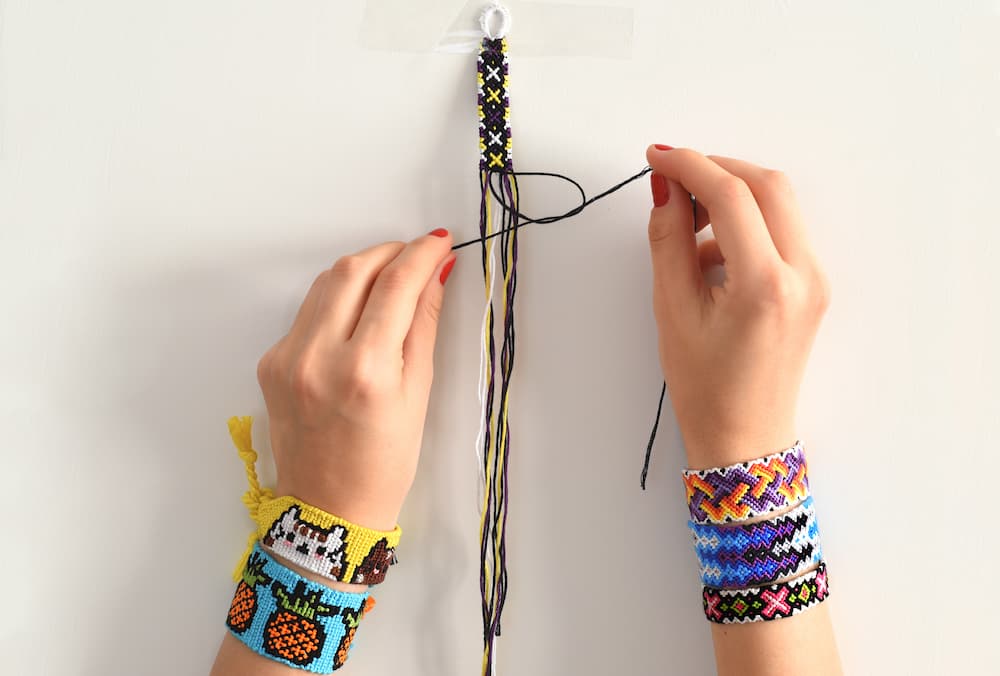
Of course, you’ve never considered turning your old headphones into a stylish accessory before now. Moreover, this tutorial requires a little focus and time but not special knowledge or abilities. Once you’ve mastered this method, you may apply it to different materials, such as cloth or elastic, to create other kinds of bracelets.
- Using the scissors, snip off both ends of the headphones’ cable, resulting in two wires of equal length.
- First, you’ll need to cut each wire in half, and then you’ll need to attach it to the table or plain surface.
- Assemble the wires as close as possible, then begin tying knots between them until you have achieved the appropriate length; remember to leave a little length of wire to use as a closure when wearing the bracelet.
- When you’re done, tie a large knot at the end of the bracelet and use buttons at both ends.
DIY Craft Activities
Both children and adults can benefit from craft therapy since it encourages creative expression, enhances motor skill development, and lowers stress levels. [2]
An essential benefit of craft therapy is the satisfaction of improving one’s skill level. Students of any age benefit from the course’s emphasis on building self-assurance and a creative mindset, which they may apply to a wide variety of non-artistic pursuits and situations.
The benefits of the arts on health and interpersonal relationships are well acknowledged. Craft therapy facilitates fine motor abilities like sketching, tracing, and cutting.
Craft time may be a stressful experience for people struggling with these fundamental abilities, as they may not want to participate or be too ashamed to show their parents their final creations. A person’s sense of accomplishment and competence can benefit from completing a task.
LEGO Sets
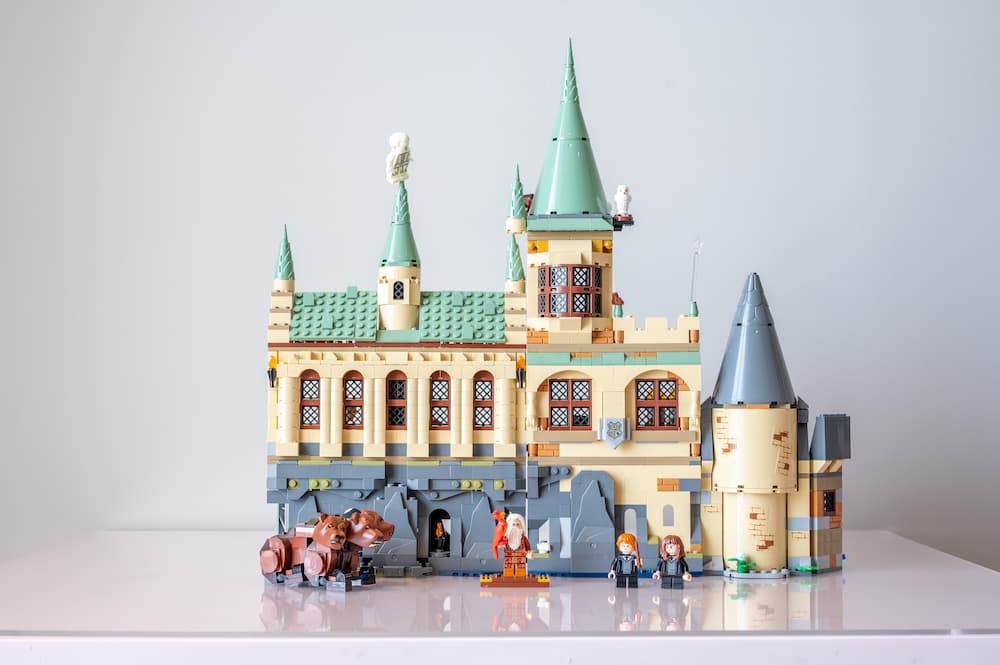
LEGO sets can help wheelchair people enjoy crafts by providing them with various pieces that can be easily assembled into different shapes. It can help keep their minds active and engaged while providing a fun and stimulating activity.
For wheelchair users with limited movement in their hands, this can be a great way to improve agility and coordination. In addition, LEGO sets can also help to improve fine motor skills and hand-eye coordination. No doubt, LEGO is among the best day program activities for disabled people.
Moreover, assembling LEGO sets can also be a great social activity. It can help to improve self-esteem and confidence, as well as provide a much-needed sense of belonging. It can provide an opportunity for wheelchair users to interact with others and make new friends who have an interest in making LEGO models.
Conclusion
The benefits of arts and craft projects go beyond serving as a pretty decoration for your walls.
Coordination, imagination, and communication are skills that may be developed and improved via such pursuits. They can also provide a new channel for expressing yourself and connecting with others.
Making art can be a fun way for individuals with disabilities to interact and share their thoughts and feelings with others.
Many values their free time enough to devote to creative pursuits like arts and crafts. Try any of the art mentioned above and craft activities. Undoubtedly, your ability to think creatively and mindfully will increase.
References
- https://www.researchgate.net/publication/362047151_EFFECT_OF_ART_AND_CRAFT_IN_DEVELOPING_FUNCTIONAL_READING_SKILLS_OF_CHILDREN_WITH_INTELLECTUAL_DISABILITY
- https://www.ncbi.nlm.nih.gov/pmc/articles/PMC5430285/
